Post Four - Guanajuato Culture
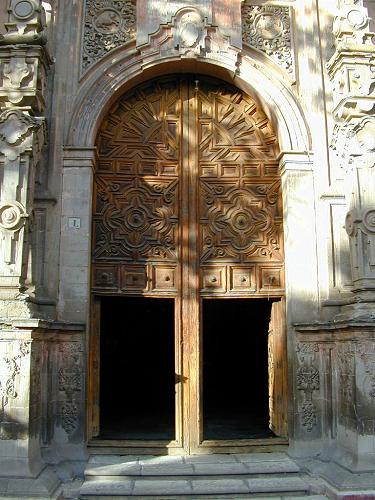 Churches ChurchesMexico is mostly Catholic and the church still plays a big role in everyday life. I am fascinated by religion, the Catholic Church especially. While in Guanajuato I visited many of the churches around the city. My favorite (shown in the photo) was a big, beautiful gothic-style church that always seemed empty whenever I dropped in. It has a small treasury with some bones from one of the saints and a couple of paintings showing the fate awaiting the wicked in hell. In the nave is a large crucifix, and a Station of the Cross with Jesus' back whipped so badly you could see the bones showing through. Both are rather startling in their realism. I found this church to be a good place for meditation. |
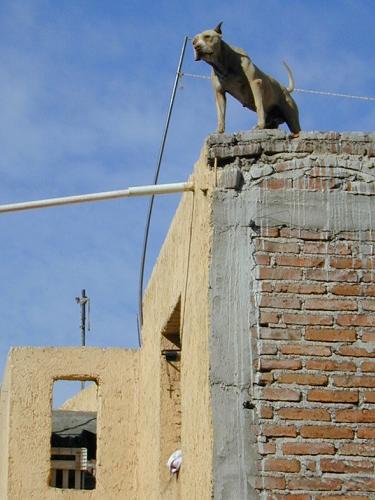 Los Perros Los PerrosThere are plenty of dogs in Mexico. Many are strays but a lot of people keep dogs as companions or for protection. Few houses in Guanajuato have yards so the dogs are kept in courtyards, or (as in this photo) on the roof. Every evening there was what we came to call "the hour of barking". At this time (usually around 8pm), all the dogs in town would start barking in a massive celebration of canine pride (or something). There would be sporadic, smaller episodes throughout the night and usually a good one in the morning. The dogs were loud but they weren't as bad as the roosters who tried to outdo each other in a contest of who could crow earliest. |
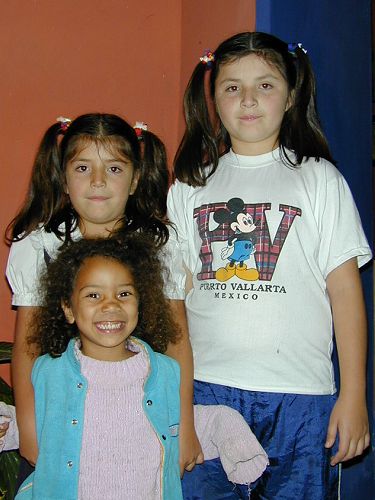 Mexican Children Mexican ChildrenThe attitude toward children in Mexico is quite different than that of the states. In the U.S., children are mostly tolerated but rarely seen in the city. In Mexico, children are a part of the community and you see them in restaurants, playing in the squares, or walking with their families. They all seem well adjusted and were, without exception, very inquisitive about us. This is a photo of Tanya and Cybelle (the daughters of Hayde, the director of our language school), and Rhythm (the daughter of one of the teachers). |
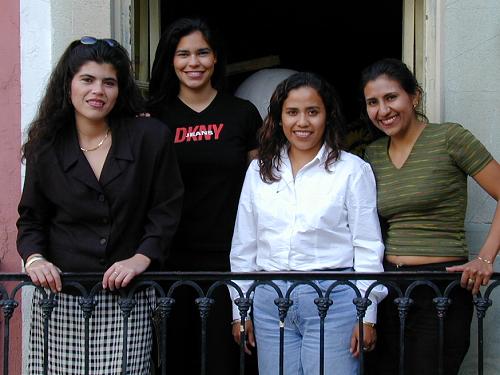 Escuela Mexicana Escuela MexicanaWhen we got to Guanajuato, we toured the three language schools there and decided on the small, Mexican run Escuela Mexicana. For about a $100 per week we had four hours of class per day - one hour of grammar and two hours of conversation in the morning, then a three-hour break for siesta with one more hour of grammar in late afternoon. We also took a Mexican cooking class and a Salsa dance class. When we came to the school, we knew little Spanish beyond the basics. After only one week we were able to make simple conversation with shopkeepers and waiters and after three weeks we could have real discussions with all the people we met. In this photo, from left to right are: Hayde (the director), Reyna, Claudia, and Olga (all teachers). |
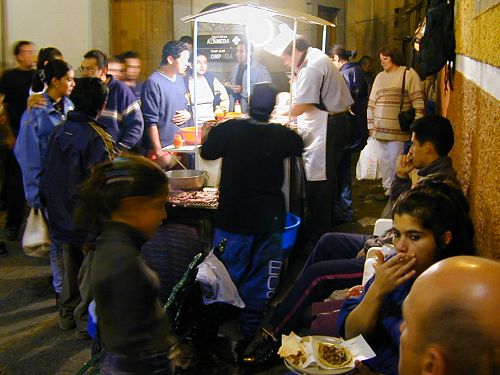 Eating on the Street Eating on the StreetThe best street food we had in Mexico was in Guanajuato. In the early evenings, or after going to the salsa bars, we would stop by the Plaza del Baratillo. Here there were several stalls offering taquitos, tortas, quesadillas, or (my favorite) tamales. The food was fresh, fast, cheap, and tasty. Sometimes you had to stand in line to order but the wait was well worth it - the popularity of the stall told us that its food was clean and safe to eat. |
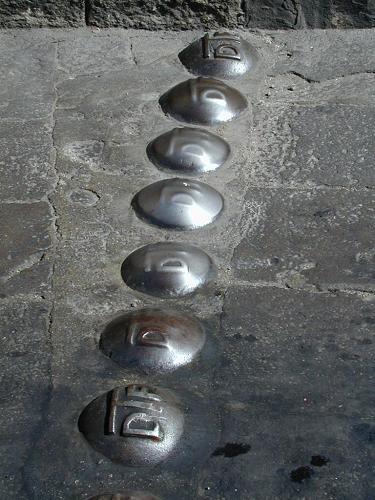 Topes TopesAt first the Mexican drivers appear to be crazy but after a while you realize they are actually quite skilled. They can weave in and out, barely missing other cars, somehow making the whole traffic system more efficient. Although they use their horns frequently, we never saw any example of the road rage you see in the states. In an attempt to keep things under control, the government installs speed bumps (called topes) everywhere but sometimes forgets to install the signs that announce their presence. More then once we were jarred out of our bus seat when the driver hit one of these too fast. This photo shows some topes in Guanajuato. |
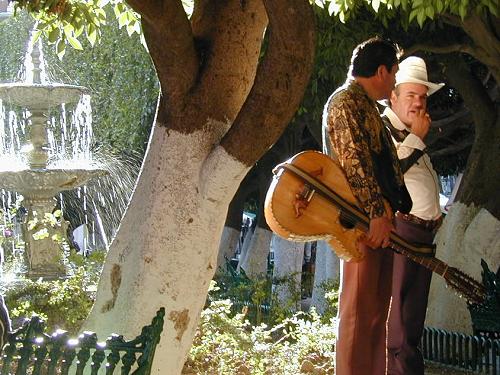 Mariachis MariachisMariachi music started in Mexico and remains the most popular form of music in the country. We had the fortune to see one of the most famous Mariachis, Pepe Aguilar, who performed after a cockfight (known as a palenque) at the Leon state fair. The crowd was so enthusiastic that it was hard to hear Pepe over their singing. In the Jardin in Guanajuato, bands of Mariachis would roam the square looking for patrons. If the patron were macho enough, they might take the role of lead singer (like a live Karaoke). We bought a couple of songs but never knew them well enough to sing. Next time we will. |
Post Four Contents
Copyright 2001
Scott & Karen Semyan